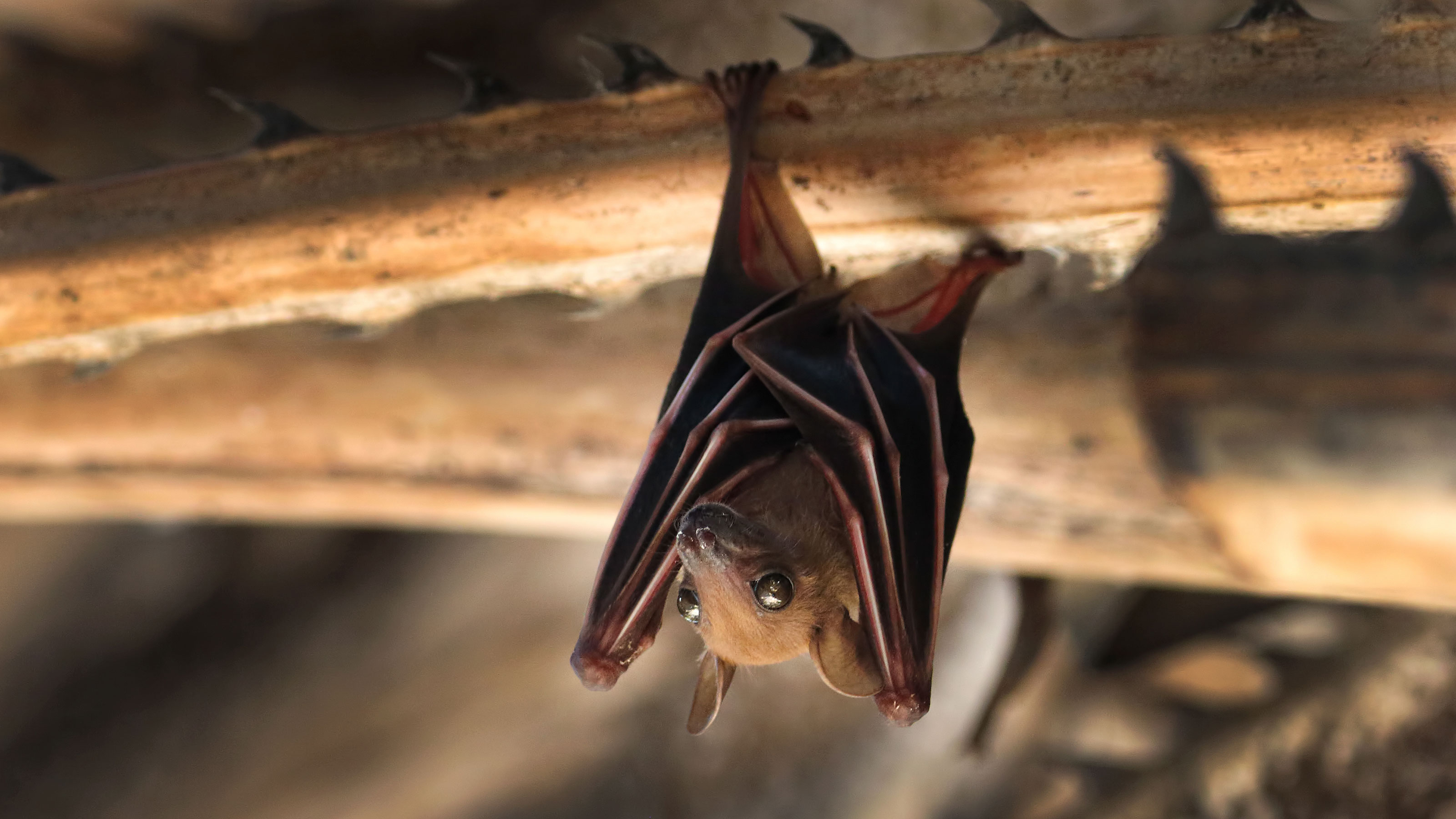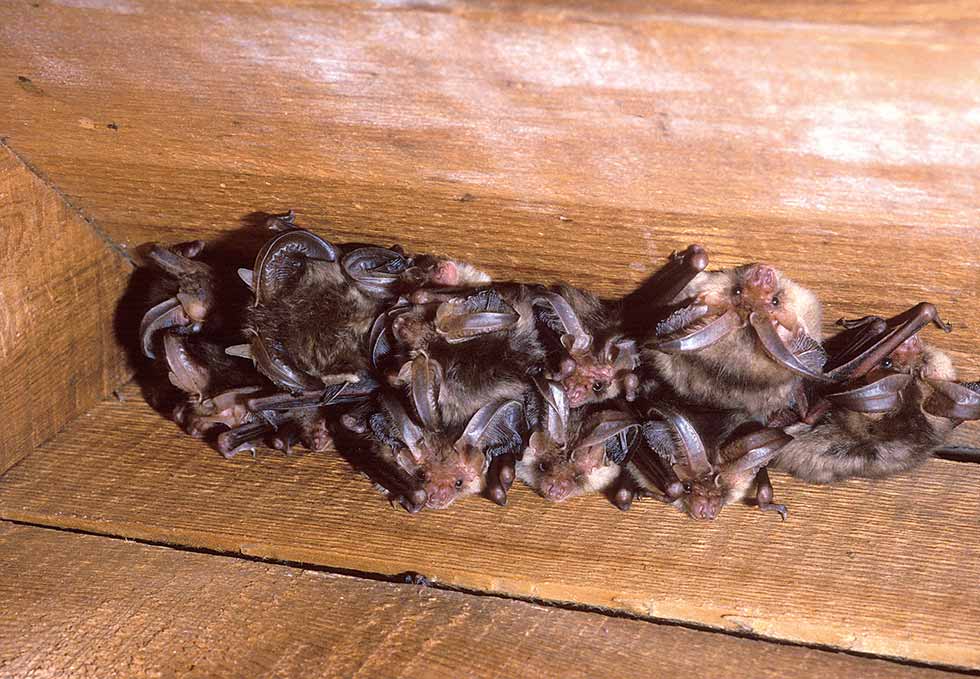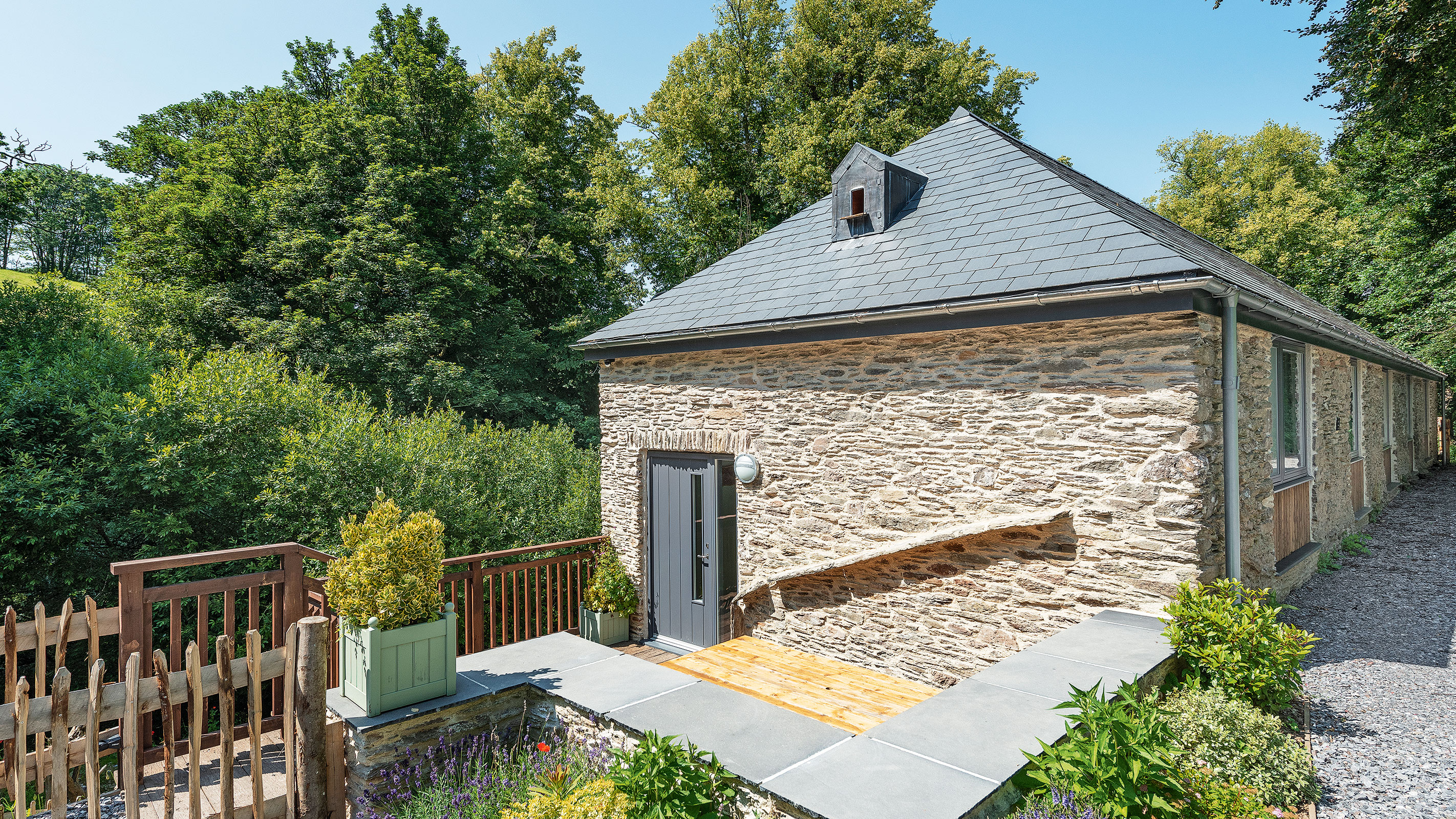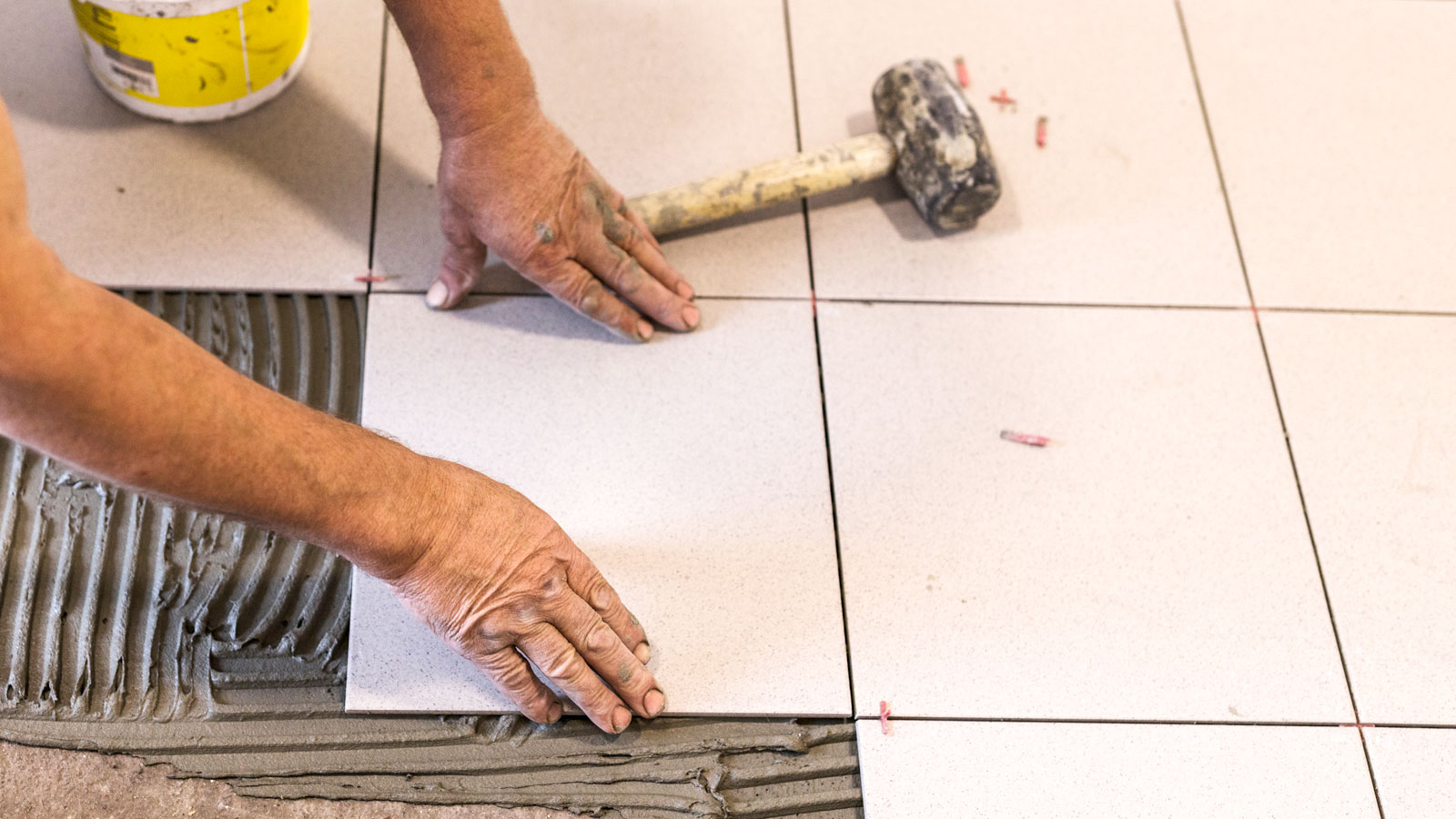Bat surveys: Costs, the law and whether you need one for your project
Bats are a protected species, and disturbing them and their habitats is a criminal offence. Our guide explains how to successfully navigate the planning process should the presence of bats be suspected in your project

Bat surveys are often a requirement for self-builders, renovators and those converting old agricultural or industrial buildings. They, along with some other house surveys, may well be needed as part of your planning application.
Bats can be found in buildings or trees on site, or foraging over grassland or water, so even as a self-builder with a fairly clear plot as a starting point, it is worth considering potential for bats on site or in the immediate vicinity.
Disturbing bats or their habitats is a criminal offence — in assessing development proposals, planning officers will give consideration to the potential for bats to be disturbed. As such, bat surveys may need to be done, along with any recommended mitigation measures, which will then need to be agreed, signed-off and installed as part of the development by the local authority and your appointed ecologist. Having bats present is rarely an insurmountable planning problem; bats can be accommodated fairly routinely in most emerging proposals.
However, if any required surveys are not undertaken and followed, then your planning application will either not be registered, or delayed, or even refused.
In this article, our experts explain everything you need to know if you are dealing with or thinking of taking on a project that could call for a bat survey.
Are bats a protected species in the UK?
The Wildlife and Countryside Act 1981 (WCA) protects bats and their roosts in England, Scotland and Wales. Some parts have been amended by the Countryside and Rights of Way Act 2000 (CRoW) which applies only in England and Wales, and by the Nature Conservation (Scotland) Act 2004.
The Conservation of Habitats and Species Regulations 2012 consolidate all the various amendments made to the Conservation (Natural Habitats, &c.) Regulations 1994 in respect of England and Wales. The 1994 Regulations transposed Council Directive 92/43/EEC on the conservation of natural habitats and of wild fauna and flora (EC Habitats Directive) into national law.
Bring your dream home to life with expert advice, how to guides and design inspiration. Sign up for our newsletter and get two free tickets to a Homebuilding & Renovating Show near you.
The Regulations provide for the designation and protection of ‘European sites’, the protection of ‘European protected species’, and the adaptation of planning and other controls for the protection of European sites. All bats are listed as ‘European protected species of animals’.
All of the following are offences to be aware of. It is illegal to:
- Deliberately capture, injure or kill a bat.
- Intentionally or recklessly disturb bats, where that disturbance may affect the ability of those bats to survive, breed, rear or nurture their young, or is likely to significantly impact on the local distribution or abundance of any bat species, whether in a roost or not.
- Damage or destroy a place of shelter (roost) of a bat, be that a resting or breeding place — regardless of whether bats are present or not.
- Possess a bat, whole or in part, alive or dead.
- Obstruct access to a roost.
Will I need a bat survey?
The main question to consider regarding the potential presence of bats is: what type of building or plot is it? Some are more likely to need bat surveys and mitigation than others. Generally, older buildings, unused buildings, structures with cracks or crevices, or dark, open loft spaces, tend to attract bats. Some bats also like crawling under older roof tiles and tile hanging.
Local authorities are obliged to ensure bats and their habitats are protected and will screen every planning permission application against the ‘likelihood of bats’ criteria. There will be a need to undertake a survey if there is a ‘reasonable likelihood’ of bats being present and potentially affected by a development proposal. In most cases, people aren’t aware of bats on their site, as they cause no noise, nuisance or disruption.
Every local authority will have a subtly different definition of when bat surveys are required, within their own local policy guidelines and planning validation requirements. If bat presence is considered to be a ‘reasonable likelihood’, the default position is a request for an initial preliminary bat survey, sometimes known as a ‘preliminary ecological appraisal’, or a ‘phase 1 bat survey’. This scopes out the likelihood of bat presence. It is similar to a desktop survey, but will require a site visit and inspection.
A surveyor will look for bat activity, bat droppings and other evidence bats may exist in a space — such as access holes or a lack of cobwebs. If your ecologist thinks bats are not likely to be on site after this survey, no further surveys should be needed. For conversions (loft or barn conversions), roof works (reroofing or remodelling) or total demolition of existing buildings, you can generally expect your ecologist to conclude that there is a reasonable chance bats would be present, so further survey work would be required.

When are bats considered a 'reasonable likelihood?
The Association of Local Government Ecologists (ALGE) has produced a trigger list of development types that require a bat survey. In many cases local authorities have produced their own version of this list.
In your local authority’s local plan, it will likely be referred to as ‘planning application validation requirements’ or ‘validation requirements for biodiversity’. The ALGE list is as below.
Bats are considered a ‘reasonable likelihood’ and a bat survey will be require for the conversion, modification, demolition or removal of buildings if they are:
- Agricultural buildings (e.g. farmhouses, barns and outbuildings) of traditional brick or stone construction and/or with exposed wooden beams. (NB surveys are not required for Dutch barns or livestock buildings with a single-skin roof)
- Buildings with weatherboarding and/or hanging tiles within 200m of woodland and/or water
- Pre-1960 detached buildings and structures within 200m of woodland and/or water
- Pre-1914 buildings within 400m of woodland and/or water
- Pre-1914 buildings with gable ends or slate roofs, regardless of location
- Any building located within, or immediately adjacent to woodland and/or immediately adjacent to water
- Any development proposals involving a wind turbine.
Note that most planning authorities have their own validation requirements which will be specific about the requirements for each type of planning application. In most cases, wording is based around ‘conversion of redundant buildings’ or similar, along with the inclusion of other specific development types.
The conclusion? Check with your local planning authority first and be aware that if the building you’re converting or renovating is currently empty, you’re likely to need a survey — along with any site close to woodland and/or water.
How much does a bat survey cost?
If your scheme falls under any of the above criteria, you will need to commission a preliminary bat survey (typical cost: £500) and, unless that provides evidence of a low potential for bat presence, a full bat survey (typical cost £1,000+) and report on how your scheme will allow for bats will be required.
If your bat survey calls for a second part, to establish if there is an actual presence of bats; this is ‘phase 2’ or ‘emergence surveys’, to see if bats can be spotted accessing the space at different times of year. This can be the most time-consuming part of preparing your development, because your ecologist may need to visit the site two or three more times.
The phase 2 surveys can only be carried out during active bat season – usually April to September – and also dependent upon weather conditions. It’s very unlikely that your planning authority will allow such surveys to be left to planning conditions, so it can be time-critical to plan this work as early as possible, as it would be needed prior to the approval of your planning application.
The cost of bat surveys can start from as little as £500, but depending on what’s required, costs can escalate to several thousand pounds — to cover emergence surveys and mitigation design. Surveys must be carried out by a licensed ecologist or (usually CIEEM accredited) and this person will follow the guidance laid out in the bat survey protocol. In addition, there is a new requirement for all planning applications to deliver ‘biodiversity net gain’, which you may need your ecologist to help design for you.
Am I likely to have bats on my site?
Two ‘F’ words and two ‘W’ words are key here: 'foraging', 'flightlines', 'woodland' and 'water'. The two sets of words are, of course, related, and a survey will provide a likelihood of bats being present on a site given its value to them.
Bats like broadleaf woodland, tree-lined watercourses and grazed parkland (just to be clear, they like to drink water and eat insects). Even more so, they like features that help them to ‘commute’, such as river valleys or hedgerows.
If there are caves or tunnels in the local area, then that’s likely to make the site more valuable. If there are lines of trees, that’s good, too. Less likely scenarios for bats are areas without water, isolated habitats such as lone trees, and the lack of presence of features listed above.
In terms of building type, the following characteristics are considered to be good for bats:
- pre-WWI housing;
- large roof voids with roof timbers over 20cm in diameter;
- generally ‘leaky’ fabric with lots of access points at junctions, say, of the roof and walls;
- warmer roofs, particularly those that are facing south;
- weatherboarding or tile hanging;
- buildings close to good foraging.
Those not so good for bats:
- modern homes with no gaps for access at junctions;
- small, cold roof spaces;
- urban or suburban location;
- lots of external lighting.
When should bat surveys be carried out?
Good planning is the key here — as part of the early design stage of your project (definitely before you come to think about submitting planning drawings) you should find out whether or not a survey is required. Given the long lead-in time for most domestic building projects (design, planning permission, finding builders, etc.), in most cases a bat survey ‘season’ can be accommodated into the schedule.
Bats tend to hibernate between November and March so activity surveys will need to be carried out as the bats become more active between May and October. However, the publication Bat Surveys: Good Practice Guidelines (available from the Bat Conservation Trust) provides much more detailed information, as the best season to conduct a survey tends to vary depending on a range of factors such as location.
The bulk of the survey work should be done during daylight hours in order to establish the location of roosts, droppings, carcasses, and so on.
Who carries out a bat survey?
Bat surveys should be carried out by a licensed ecologist — otherwise they are likely to be refused by the local authority. The surveyor will follow the guidance laid out in 'Bat Surveys: Good Practice Guidelines'.
Licenses are managed by Natural England (in England), Scottish Natural Heritage (in Scotland), Natural Resources (Wales) or the Northern Ireland Environment Agency. You should check to see that the bat surveyor you contract has the relevant licenses (if in doubt, check with the managing organisation).
What types of bat surveys are there?
Think of bat surveys in two parts. Firstly, a preliminary survey to assess whether there is any likelihood of bats being present. This is essentially a scoping exercise and consists of two elements: a desk-based data survey and a walkaround. Unless this survey conclusively dismisses the possibility of bats, a full survey (also known as an activity survey) is carried out.
The surveys should be carried in accordance with the Bat Surveys: Good Practice Guidelines.
Preliminary Bat Survey
An awful lot of information can be gleaned from public resources. First of all, the survey will map relevant recorded presence of bats in the area. The ‘area’ in this case is the site and curtilage itself.
Most bat species travel up to 10km and in the case of residential development, it is important to map any noted presence to this extent, with specific interest in the immediate 1km.
Your surveyor will research national and locally held databases (perhaps even getting in touch with local bat groups) to assess presence. This data should also include details of woodland and watercourses, ponds, etc. This information will be contextualised as to the habits of particular species most likely to be in the area.
The Extended (Phase 1) Survey
Surveyors are looking for potential for roosts, evidence of actual roosts and, of course, evidence of bats themselves on site. The type of building and, in particular, the roof space will be of interest with the surveyor taking note of deviances in the roof tiles, felt, or any other potential entry points.
Again, the type of building considered of ‘high value’ to bats depends on the type of bat. Pipistrelles like crevices to dwell in; long-eared species tend to like large open roof spaces.
Most likely the surveyor will set up bat detectors – which can be left unattended over several days and nights to record any bat calls – to assess activity. One point worth mentioning: most surveyors suggest that the presence of large cobwebs in the building – while upsetting to those who shudder at the thought of spiders – is an indicator of a lack of bat presence.
The Invasive Survey (Roost Inspection)
A more intrusive survey is also undertaken at the preliminary stage, and this will look for certain tell-tale signs both internally and externally, including:
- Droppings: Bat droppings will crumble when rubbed between your fingers. Also, of course, they can be found on walls or in cobwebs, whether those supplied by other species are not.
- Feeding remains: Bats like insects but tend to be less fussed about their wings. Large accumulations of wings mean there are more likely to be bats.
- No cobwebs: A lack of cobwebs means bats might be stopping their propagation, particularly if no evidence can be found of nesting birds.
- Smell: Bats have an identifiable odour (a charming mix of ammonia and mustiness).
- Scratching and tracks: Physical evidence of marks around access points and in dust.
The Full Bat Survey
If the preliminary assessments indicate the possibility of bats, then an activity survey is usually the next step. The surveyor recommends the best time to carry out the survey (e.g. between May and August), at dusk and dawn — often on more than one occasion, on a dry day.
These surveys have to be carried out by licensed bat workers and the period of time the site is surveyed for varies with the likelihood of bats and the scope of the initial proposal (the so-called transect effort index). These activity surveys, which include the use of infra-red cameras, hand-held bat detectors, unattended fixed bat detectors (which can record sound for three consecutive days and nights), and even radars, are likely to cost in the region of £1,000.
The full survey will present data that details the activity and presence of bats through, for example, the number of passes, by the type of species, and at a particular location. This survey will need to be submitted with the full planning application for the scheme along with a Conservation Report on Measures (Mitigation, Compensation and Enhancement).
You won’t need a full bat survey if:
- Your proposal is not one of the triggering development schemes outlined by your local authority.
- Your preliminary bat survey has found a low potential to support bats (with evidence to back this up).
- You have word from the local authority that there is no need to carry out a full survey.

What happens if I've got bats?
Development work where bats are present takes one of two routes: compensation or mitigation. In essence:
- Compensation is the process through which you accept that you are in breach of the legislation (and a licence therefore helps you avoid prosecution);
- Mitigation work, which minimises the impact of the development on bats, does not usually need a European Protected Species (EPS) licence — although, to complicate matters, it may do.
Licenses are administered by Statutory Nature Conservation Organisations — the main basis for refusal is that an alternative measure could be proposed that has a less significant impact on bats. To apply for a licence (and therefore avoid prosecution), you will need to have demonstrated sophisticated mitigation or compensation proposals.
Whether work is considered to be mitigation or compensation depends on its scope and the impact it has on the roost. For example, a re-roofing project will be considered mitigation if the work is proposed outside of the roosting season, the roof void itself will be replaced as it is, along with any access points being replaced in the same position. A scheme that replaces roof timbers or changes the location of any roof access points will be considered compensation (and therefore require a license in order to avoid prosecution).

What is bat mitigation?
In terms of what practices need to be followed to design bat mitigation, any reroofing must adhere to detailed guidance of mitigation specified by an ecologist, which may have to allow for access to spaces and structures for bats. ‘Bat tiles’ and ‘bat lofts’ are common ways to re-provide habitat for the most common bats encountered — pipistrelles and long-eared bats respectively.
Bat mitigation usually requires built-in access points, or bat boxes in trees, and in some instances standalone buildings and structures, primarily for use by displaced bats. When replacing roofs, there are key guidelines that must be followed on the types of membranes and roofing felt under roof tiles and finishes. It is no longer possible to use modern woven fabric membranes, as bats can become entangled in such materials, which ultimately leads to death.
Bats are light sensitive, so your ecologist can also help with your external lighting plans and glazing design, to prevent impacts on bats. The planners will also consider this aspect of the development in determining your planning application. So low-level or downward-angled external lighting can be a simple and effective form of bat mitigation.
Any requirements for mitigation will depend directly on the types of bats that are found. Occasionally, DNA analysis of droppings may be required if there is a chance that rare bats are present. For example, if there are records of such bats in the vicinity of the site. Construction details may be required by the planning authority – usually via your planning conditions – which will seek to firm up exactly what mitigation will be implemented, and a timescale for this. So these mitigation matters will need to be agreed, installed and potentially inspected, prior to a self-builder moving into their new home.
If you decide to not follow the guidance and the law or delivery of mitigation methods, then this can escalate quite quickly, to either a planning refusal or planning enforcement action. In a worst case scenario, this can lead to prosecution under the Wildlife Countryside Act 1981, which carries a potential prison sentence and large fines.
In conclusion, it is better to be way ahead of the curve on these matters and engage with an ecologist and the process before you even commence design work. Bear in mind that good ecologists get booked up quickly.
Usually, the re-roofing of a building will demand formalised new access measures to replace those that exist, informally, already. Typically these would involve specially designed roof and ridge tiles with raised elements built in to allow access — usually known as bat access sets, which consist of three tiles (including a ridge) all slightly raised to allow air movement and, of course, access.
The type of measure you end up with will have to be based on the requirements of the bats you are suspected to be sharing your new home with. Their access points and any ‘bat home’-style products will need to be based on their requirements.
The more elaborate measures come when roosts are moved. Mitigation would then involve the creation of a newly built roost which, as a visual reference, might not be unlike a rather fancy shed — perhaps bigger. In many cases, these would need to be heated and insulated and built to rather specific constructional guidelines. The cost implication is all too significant (often running into the low £1,000s), but cannot be avoided.
Details of these design proposals will need to be outlined in the Conservation Report, usually involving sketches of the new locations of access points and design details (e.g. ridge tiles, bat access roof tiles to be used, etc.). If you want to show that you are compliant with mitigation, you will need to ensure the Continued Ecological Functionality (CEF) of the site.
The actual type of measure will depend on the type of bat found. An occasional roost used by a single male pipistrelle offers a much easier scenario than a maternity colony of long-eared bats — which rather than the off-the-shelf items described above is likely to require a dedicated new space such as the dreaded bat attic, which could be up to 6m high.
The best course of action – particularly for those needing to go down the route of getting licenced work – is to check out the guidance on the ROOST website.

Darren Bray is founder and director of Studio B.A.D Architects, and lectures at Reading School of Architecture.

Deborah is a planning consultant and has 20 years’ experience in public and private sector planning.
Darren Bray is Technical Director of award winning New Forest practice Pad Studio. He has been a part time studio tutor at Portsmouth School of Architecture since 2007.
